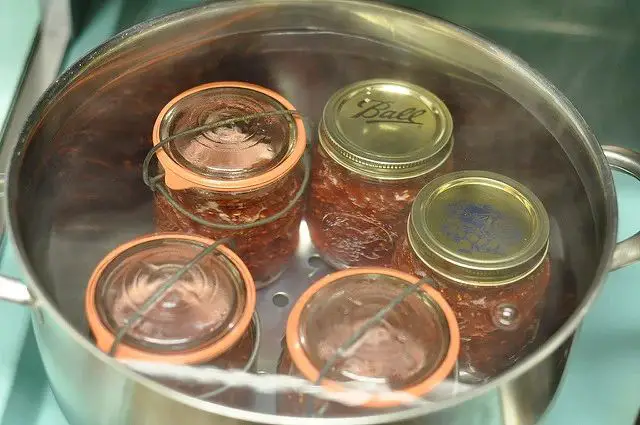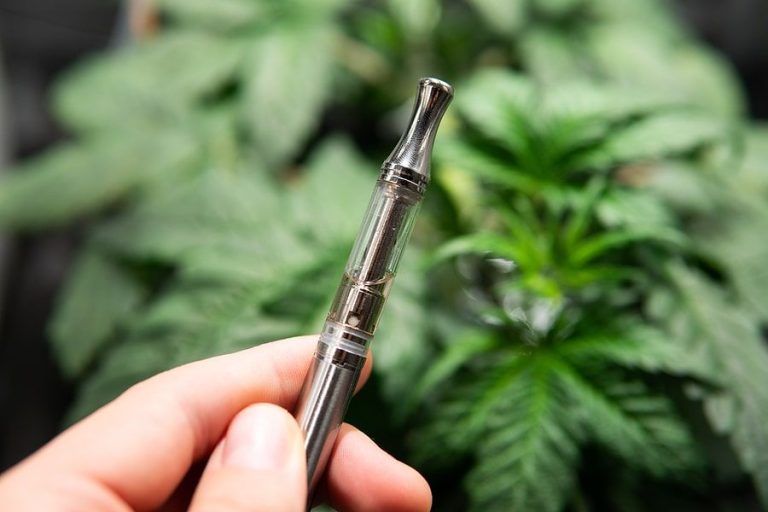Are Old Canning Jars Safe To Use?
Canning jars have been a kitchen staple for generations. Ever since home canning became popular in the late 18th century, Mason jars and other vintage containers have allowed home cooks to preserve fruits, vegetables, jams, pickles, and more. However, old jars that have been sitting in your pantry or passed down through families can cause safety concerns. Rusty lids, compromised seals, and deteriorated glass are red flags that the jar may no longer be fit for canning. This article will provide a comprehensive guide on determining if your old canning jars are still safe to use.
History of Canning Jars
The origin of canning jars dates back to 1795 when Nicolas Appert, a French inventor, first discovered a method of preserving food in glass jars. Appert’s innovation was inspired by the French military’s need to feed their troops. His method involved sealing food inside glass jars and then boiling them. This heating process killed microbes and bacteria that caused food to spoil.
Home canning gained popularity in the United States in the 1820s and 1830s. During this time, John Landis Mason patented the threaded glass jar with a metal screw-on lid in 1858 (Cellar and Conservatory). This provided an airtight seal and allowed food to be preserved for long periods of time. Mason’s design became the basis for the mason jar still widely used today.
By the late 19th century, companies began mass producing glass canning jars. Brands like Ball and Kerr emerged as the main providers of canning jars and accessories like metal lids and rubber gaskets. Today, Ball and Kerr continue to be the major producers of canning jars in the U.S. alongside brands like Anchor Hocking.
Types of Canning Jars
There are several types of jars that can be used for canning, with the most common being Mason jars, bail top jars, and plastic jars. According to The Jar Store, the main types of canning jars are regular-mouth and wide-mouth Mason jars.
Mason jars, sometimes called Ball jars, Kerr jars, or Bernardin jars, are made of glass and come with a screw-on metal lid. The lid has a rubber seal to keep food fresh and prevent spoilage. Mason jars come in regular and wide-mouth varieties as well as different sizes. Regular-mouth jars work well for jams, jellies, and pie fillings while wide-mouth jars are good for whole fruits and pickles.
Bail top jars, also known as lightning jars, have a glass lid secured by a wire bail. According to Fuss Free Flavours, bail top jars allow oxygen to flow in and out, so they are best for short-term storage. These vintage-style jars have rubber gaskets like Mason jars.
Some canning jars are made of plastic instead of glass. While convenient, plastic jars are not recommended for canning acidic foods which can interact with the plastic. Glass jars are preferred for canning safety and maintaining food quality over time. The rigid structure of glass jars also makes it easier to obtain a good seal.
Why Jars Go Bad
There are a few key reasons why old canning jars can go bad and become unsafe to use:

Cracks – One of the most common reasons jars go bad is cracks. Cracks allow air to get into the jar, contaminating the contents and preventing a proper seal. Even tiny hairline cracks are dangerous. According to experts, cracks are often caused by thermal shock from temperature changes or improper handling. Check the jar thoroughly including the lid, rim, and bottom for any cracks before use. [1]
Chips and nicks – Small chips or nicks in the glass can also compromise the seal and allow bacteria inside. Carefully inspect the rim where chips and nicks often occur. Even small imperfections can prevent a vacuum seal. [2]
Rust – Rust on the metal lid bands or lids indicates the jars are past their prime. Rust can prevent a complete seal and may leech metallic compounds into the food contents. Discard any rusted lids or rings.
Signs of Bad Jars
There are some clear signs that indicate when a jar has gone bad and should not be used. The most obvious is the presence of mold. If you see any fuzz, spots, or discoloration inside the jar, do not use the contents. Mold spores can survive the canning process and contaminate the food, producing toxins that may not be destroyed by reheating. Even a small amount of mold indicates the entire contents should be discarded.
Another sign is bulging lids. The lid on a properly sealed jar will be slightly concave, from the vacuum created during processing. If the lid is bulging or flat, air has gotten into the jar and bacteria may have contaminated the food. These jars are not safe to use. According to experts at Penn State Extension, when a jar becomes unsealed months after canning, bacteria can grow and produce gas, causing the lid to bulge [1].
Any sign of leaking fluid means bacteria have entered the jar and can multiply. Leaks usually occur because the lids were not properly sealed during canning. Bacteria and molds thrive in the oxygen-rich environment inside a leaking jar. Do not consume leaking jars even if the food looks and smells normal.
Checking for these signs on old canning jars is important to avoid foodborne illness. If you see mold, bulging lids, or leaks, discard the entire contents of the jar.
Testing Old Jars
Before using old canning jars, it’s important to thoroughly test them to ensure they are still functional and safe for canning. There are a few simple methods for testing old jars:
Visual Inspection
First, carefully inspect each jar for any cracks, chips, dents or rust. Check the rim of the jar for any nicks or imperfections which could impact the seal. Also inspect the bail and rubber gasket on zinc lid jars to make sure they are still pliable and not dried out or brittle. Any jars with visible damage should not be reused for canning (The Metal Spoon Test).
Hot Water Bath
Next, perform a hot water bath test. Submerge the jars in boiling water for 10-15 minutes. This will allow you to check if any bubbles appear which would indicate a crack. Let the jars cool completely before removing from the water. Visually inspect again for any new cracks that may have formed from the temperature change. Any jars that leak or crack should be discarded.
Pressure Canner Test
Finally, test the seal by running the jars through a pressure canning cycle without any food inside. Place lids on the empty jars and process at 5-10 psi for 10-15 minutes. Allow to cool and check that each lid has sealed properly. If any fail to seal, do not reuse those jars.
Proper Jar Cleaning
Properly cleaning old canning jars is crucial before reusing them. The two main steps are washing with soap and water, and sterilization.
First, wash the jars in hot, soapy water. Use a soft brush or sponge to gently scrub away any dirt, residue, or stains on the inside and outside of the jars. Make sure to get into the threads of the jar as well. Rinse thoroughly after washing. According to this Houzz discussion, some people recommend using vinegar during the wash cycle to help cut through buildup.
After washing, it’s important to sterilize the jars before use in canning. This kills any bacteria or microorganisms that could contaminate preserved foods. The jars can be sterilized by submerging them in boiling water for 10 minutes before use. The lids should be simmered in hot water for several minutes as well. Alternatively, the jars and lids can be sterilized in a hot oven at 250°F for at least 10 minutes.
Proper cleaning and sterilization will help ensure old canning jars are safe for reuse in home food preservation.
Safe Usage Tips
When using old canning jars, it’s important to take some precautions to ensure food safety. Here are some tips for safely using vintage jars:
- Inspect jars carefully for any chips, cracks, or defects. Even small chips can allow bacteria to enter, leading to food contamination. Don’t use any jars with cracks or damage.
- Wash jars thoroughly by hand using hot, soapy water before each use. Do not put old jars in the dishwasher, as the harsh chemicals and high heat can cause further damage. Scrub thoroughly to remove any residue.
- Use proper canning techniques for jams, pickles, etc. Follow updated USDA guidelines for processing times and acidity levels.
- Don’t reuse lids or screw bands – always use new lids to ensure a proper seal.
- Label and date jars properly so you know what’s inside and when it was preserved.
- Store jars in a cool, dark place like a root cellar or pantry. Sunlight can break down seals over time.
Taking these precautions allows you to safely use vintage canning jars for home food preservation and storage. But any jars with defects or damage should be discarded.
Storing Jars Properly
Proper storage is key to ensuring your jars remain in good condition over time. According to experts, the ideal storage conditions for canning jars are a cool, dark place with the lid on:
A cool environment helps prevent food spoilage and degradation of the jar and lid material. Store jars away from heat sources like ovens, dishwashers, and direct sunlight which can cause deterioration. Aim for temperatures between 50-70°F.
Keeping jars in the dark helps protect against UV light damage and fading. Light can degrade rubber seals and lid linings over time.
Always store jars with the lids on tight. This prevents dust and pests from getting inside, and keeps the sealing surface clean for future use. Tight lids also help maintain a vacuum seal.
With proper storage conditions, canning jars can retain their integrity for many years. But be sure to inspect thoroughly before reuse. Follow the testing guidelines to confirm jars are still safe and functional.
Source: https://storables.com/articles/how-to-store-canning-jars/
Conclusion
In summary, old canning jars can often be safely reused if properly inspected and cleaned. Look for signs of damage like cracks, chips, rust, and lid defects. Test the seal by filling the jar with water and inverting – if it leaks, it should not be used. Sterilize jars by boiling before use to kill any lingering bacteria. Store unused jars properly in a cool, dark place. With careful inspection and preparation, old canning jars can be repurposed for many safe uses. However, when in doubt, it is best to recycle old jars and purchase new ones.
Hopefully this overview gives you the information you need to determine if your old canning jars are still safe to use. Proper cleaning and maintenance is key. When handled with care, these vintage jars can live on for many more years of home canning.




